Yesterday, I woke with the kind of joy kids feel on Christmas or when they look out the window and see the snow falling. After many months of patiently waiting, the day for my next cooking class with the super talented Samin Nosrat at the new SF Cooking School had finally arrived. And the topic? She was going to teach us all about Tasting.
As I had learned so much from attending Samin’s Salt class last summer, I was fully prepared to walk away with my brain groaning from the weight of new information about cooking and food. I was not disappointed. I plan to write a series of posts, from how to think about the taste elements in a meal, to how to correctly poach an egg and make chocolate caramel truffles.
SF Cooking School is a brand spanking new, sparkly, well-lit place to learn how to cook, whether you’re a home-cook or aspiring pro. (I’ll be chatting with co-founder Jodi Liano soon about this great new concept.) When I arrive, Samin enthusiastically greets me like a long-lost friend, immediately making me feel even more excited about what lies ahead, as our group of 14 gathers around the stainless steel benches for the start of the five-hour class.
We are a diverse group with an equal number of men and women of all ages. There is a wide range of folks here today, from two mother/son combinations, to a guy whose sisters sent him to the class – though he claims he can cook better than most of them – to experienced home cooks hungry for more knowledge, and the manager of a local Wholefoods store.
Samin starts the class by telling us: “Developing your palate is the most important thing you can do as a cook, and you are all qualified to taste.” That last point is important as many of us can feel intimidated in the kitchen, yet we all have taste buds and a point of view. She says, “If you take nothing else away from today, make sure you are thinking about salt, fat and acid, whenever you are tasting a dish and adjusting flavors.” She is in the process of writing a book about these elements as she feels they are the crux of all great cooking.
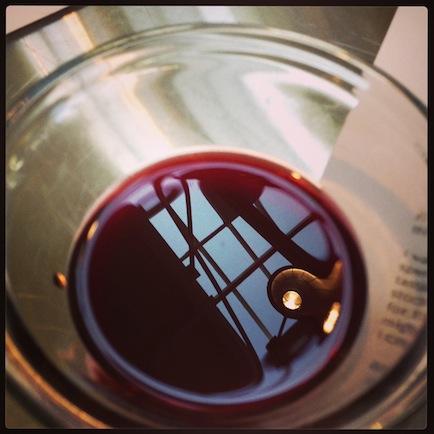
She passes around a series of different ingredients for us to taste: olive oil, salt, vinegar, chicken broth, milk, eggs, butter, cooked greens, a regular lemon and a Meyer lemon, and chocolate. With each item, there are at least two different types to compare and contrast, although in the case of the chocolate we get to try eight different brands from milk to dark with varying cocoa contents. Yum.
Samin’s point in making us go through this exercise is this: a simple ingredient like butter can wildly vary in taste, even if you buy the same brand year-round. We compare a big brand salted butter with her favorite organic, cultured butter from the Sierra Nevada Cheese Company. The first is bland and fatty. The second is much more complex, almost cheesy tasting, and you can immediately understand that in certain recipes you would want to feature that taste, but in others it might overshadow another more delicate ingredient. Let’s say you buy Strauss butter that uses milk from organic, grass-fed cows. In spring, the abundance of sweet new grass gives the butter an entirely different flavor and color from what you’ll find in the fall. Samin tells us: “At Chez Panisse there are certain times of year when they can’t use Straus butter in their pastry-making because it tastes too cheesy [which would spoil the resulting dish].”
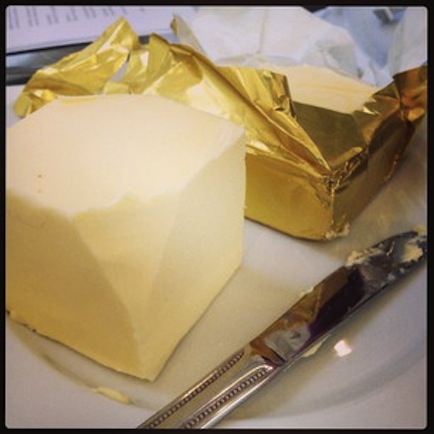
A big takeaway for me, as someone who likes to burst into the kitchen and start pulling out ingredients, chopping and cooking, is to stop for a moment and think about what I’m about to create, a bit like an artist may survey the landscape before picking up his/her paintbrush. (Probably a great life lesson.) Samin urges us to think about the history and origins of a dish and what it calls for. “I’d never put olive oil in Thai food,” she explains, “as that would overwhelm the delicate flavors. Nor would I put collard greens in an Italian dish. I’d think about what grows in that region, like say rapini, and use that to ensure the dish is true to its roots.”
We taste two kinds of parmesan. One is aged Italian Parmesan Reggiano, the real deal. The other is a younger, yellower, American version (on the right below). The parmesan reminds Samin to talk about umami, the fifth taste sensation that the Japanese use to describe an almost indescribable savoriness that a flavor can release in your mouth. We in the Western world, being pedestrian, ascribe just four tastes: sweet, salty, sour and bitter. Apparently the two foods highest on the umami scale are parmesan and Heinz ketchup! My personal favorite is truffle oil. In my book, it adds a whole new depth of (sophisticated) taste to a dish. You can dress up humble scrambled eggs with the stuff or drizzle it on a simple homemade mozzarella and tomato pizza, and suddenly your friends will think you went to cooking school. It’s like magic fairy dust.
Just by looking at the different parmesans you can tell they will taste different. The Italian aged cheese is paler, and has lots of flecks of salty white glutamate crystals (which provide that umami taste). It feels different in your mouth. A little crumbly, but oh so good. You immediately want more. The American one is very salty, and has a blander texture. Of course, you get what you pay for, but Samin reminds us that practicing economy in the kitchen is a virtue and using a little of the best ingredients can pay off. You can even put Parmesan rinds in soups (assuming they are Italian in origin and call for it) to add a deeper flavor. Carlo Petrini would be proud. Samin’s all-time favorite Parmesan is Vacche Rosse (red cow) from the province of Reggio Emili in Itay.
We taste vinegar – acids – some are sweet, some almost impossible to taste they are so sour. We compare the tartness of a lemon to the sweeter Meyer lemon. Understand the varying texture and flavors of greens, and talk at length about salt and how its saltiness can vary. Being a good student, I take pages of notes and masses of photographs, not wanting to miss anything out when I share it with you.
Finally, it’s time to split into groups so we can prepare a feast to share. I angst over whether to follow my heart and prepare dessert which involves making caramel, or follow my head and take on the root remoulade. Find out which part of the kitchen I land in next time…
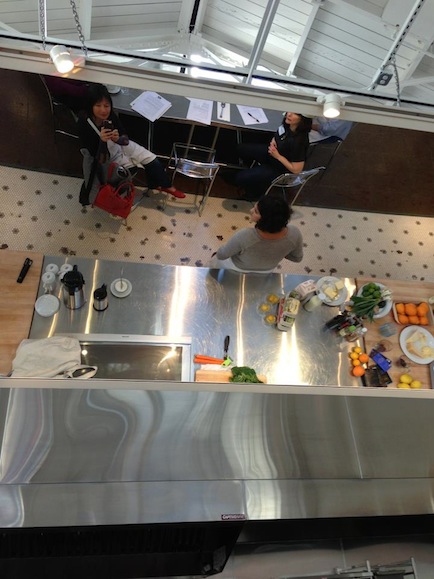
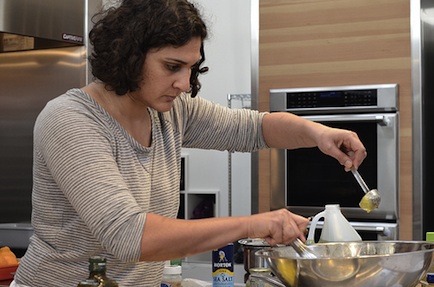
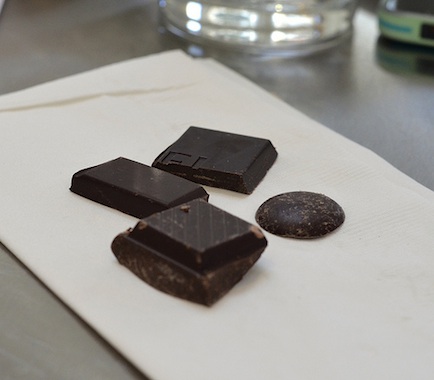
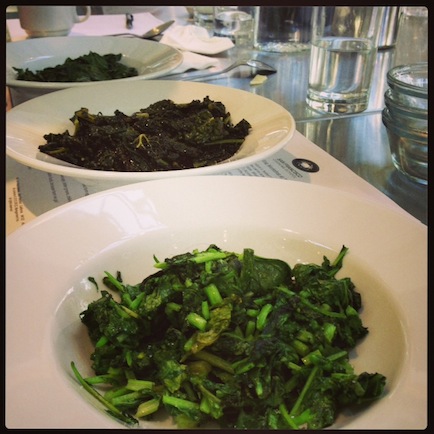
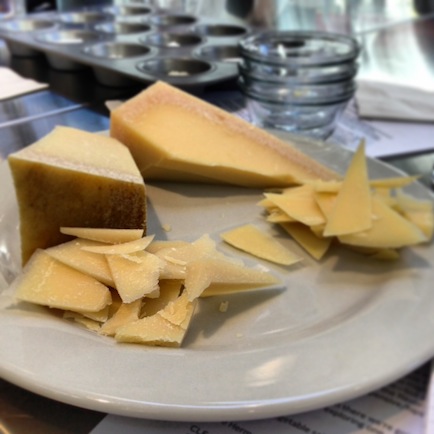

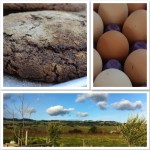
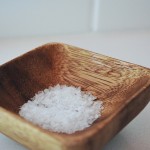
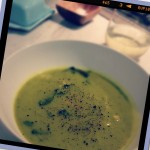
[…] A Lesson in Tasting […]